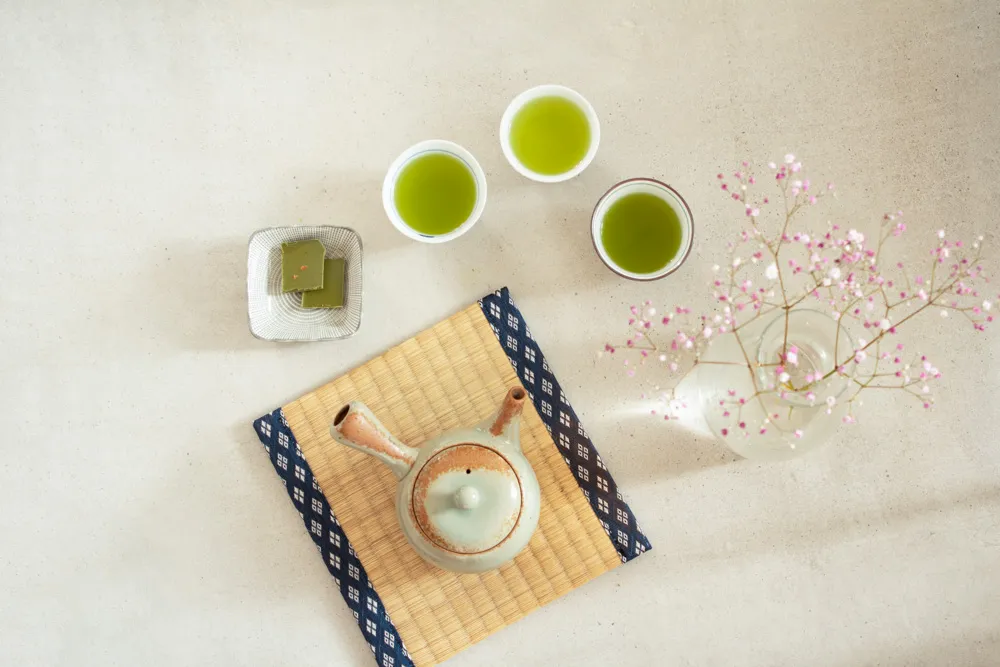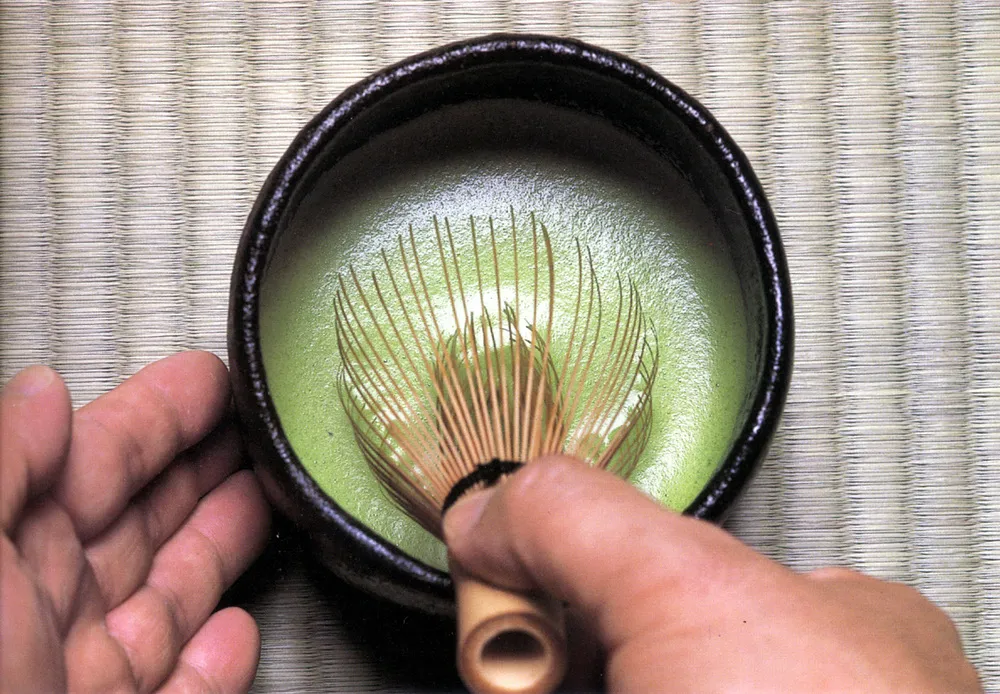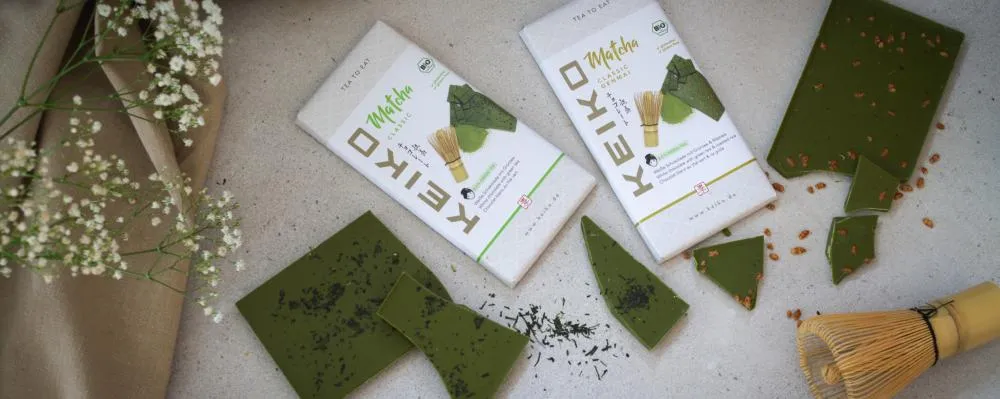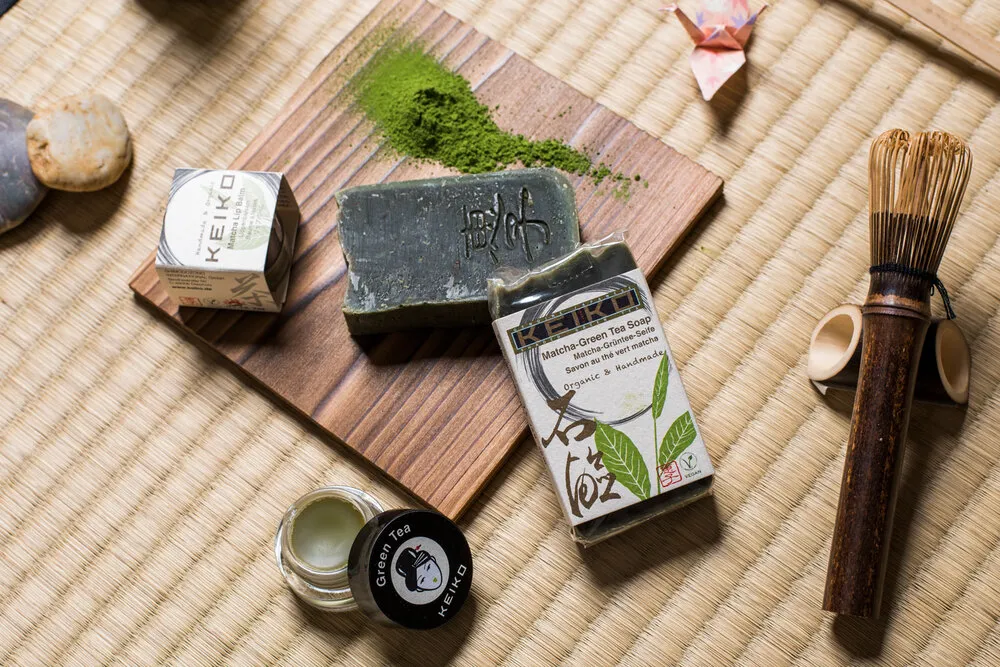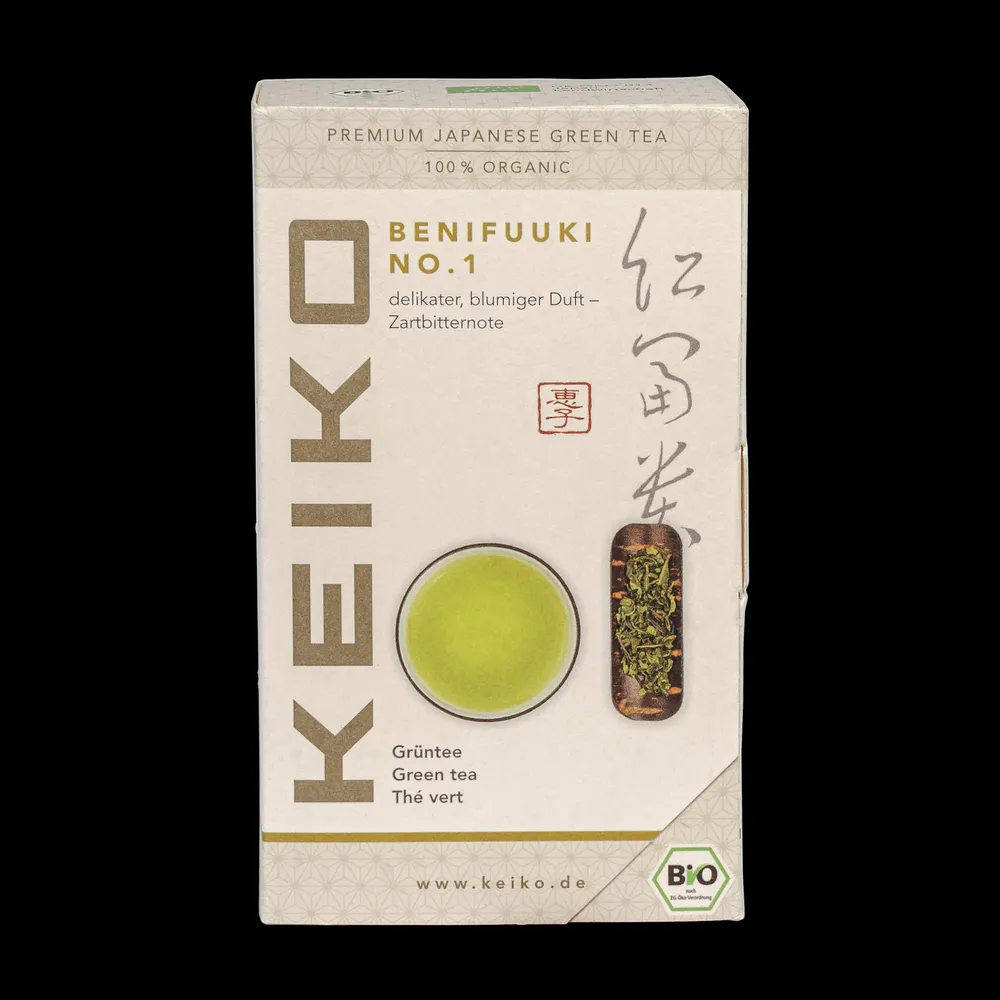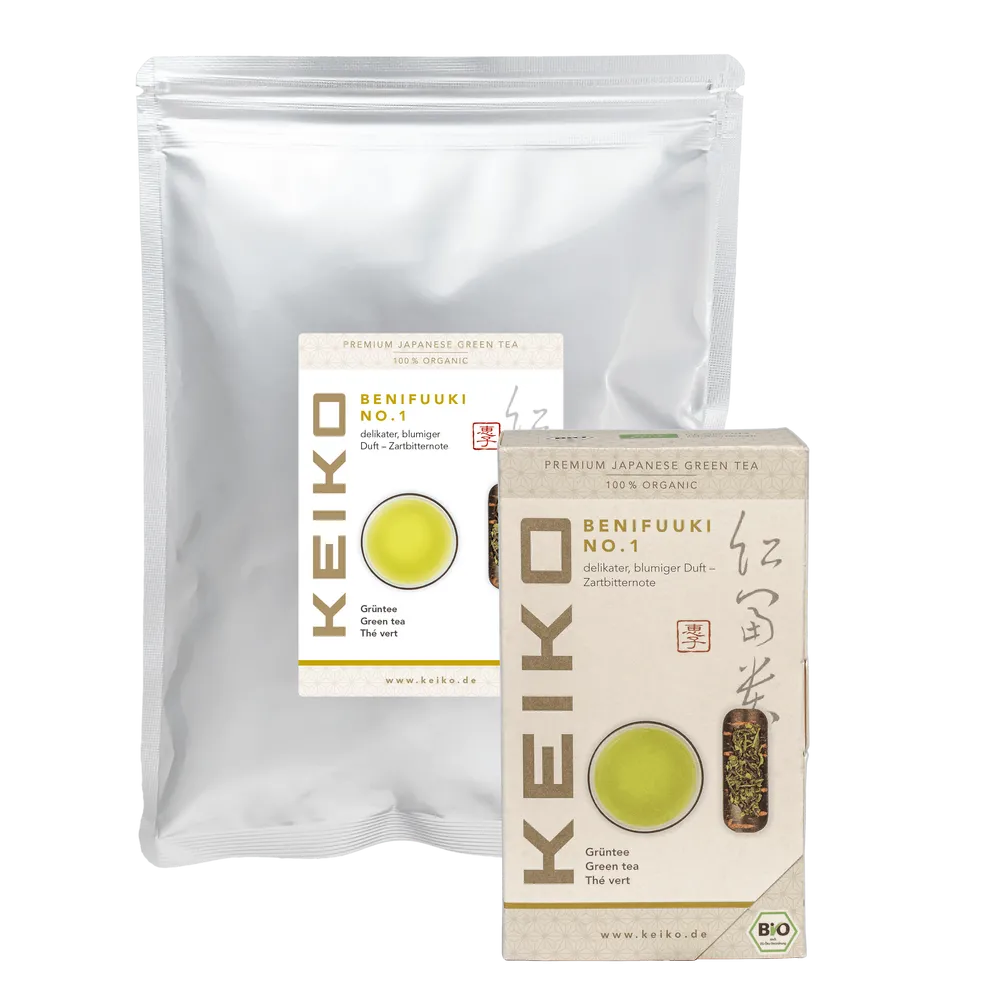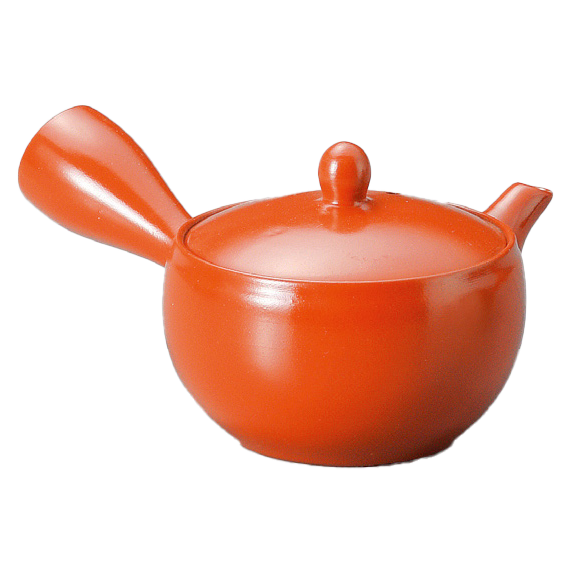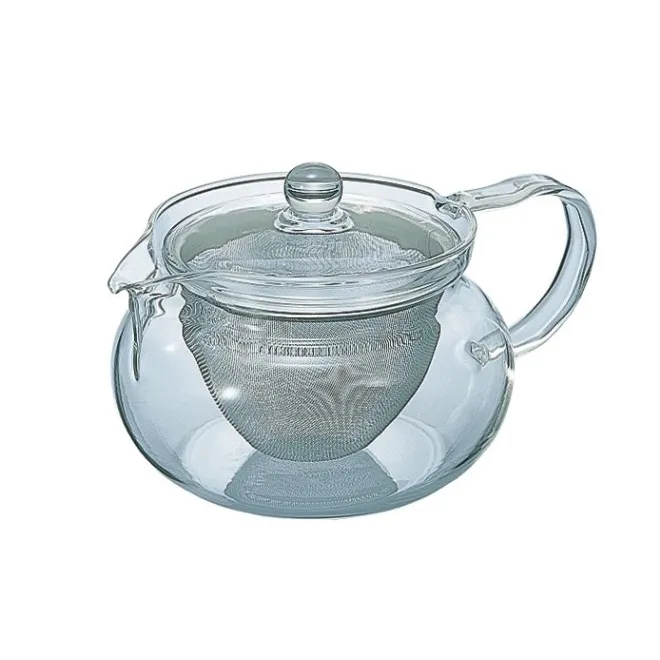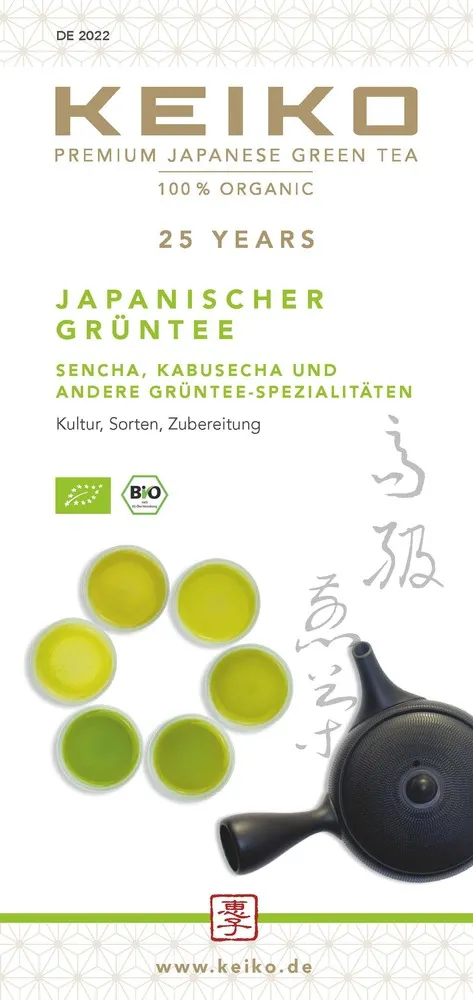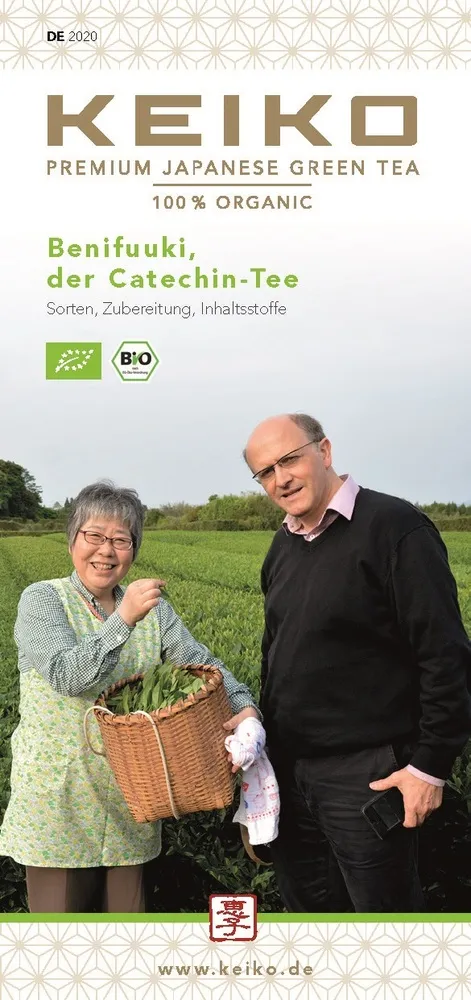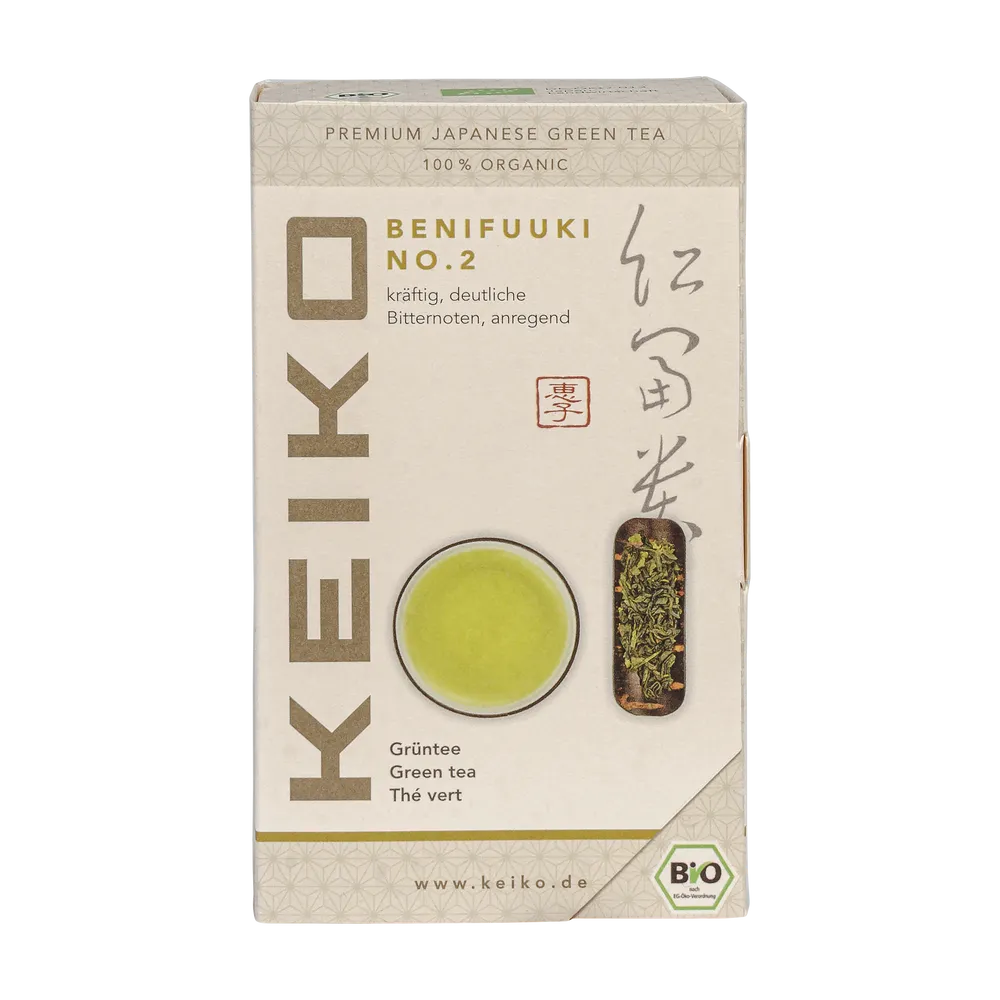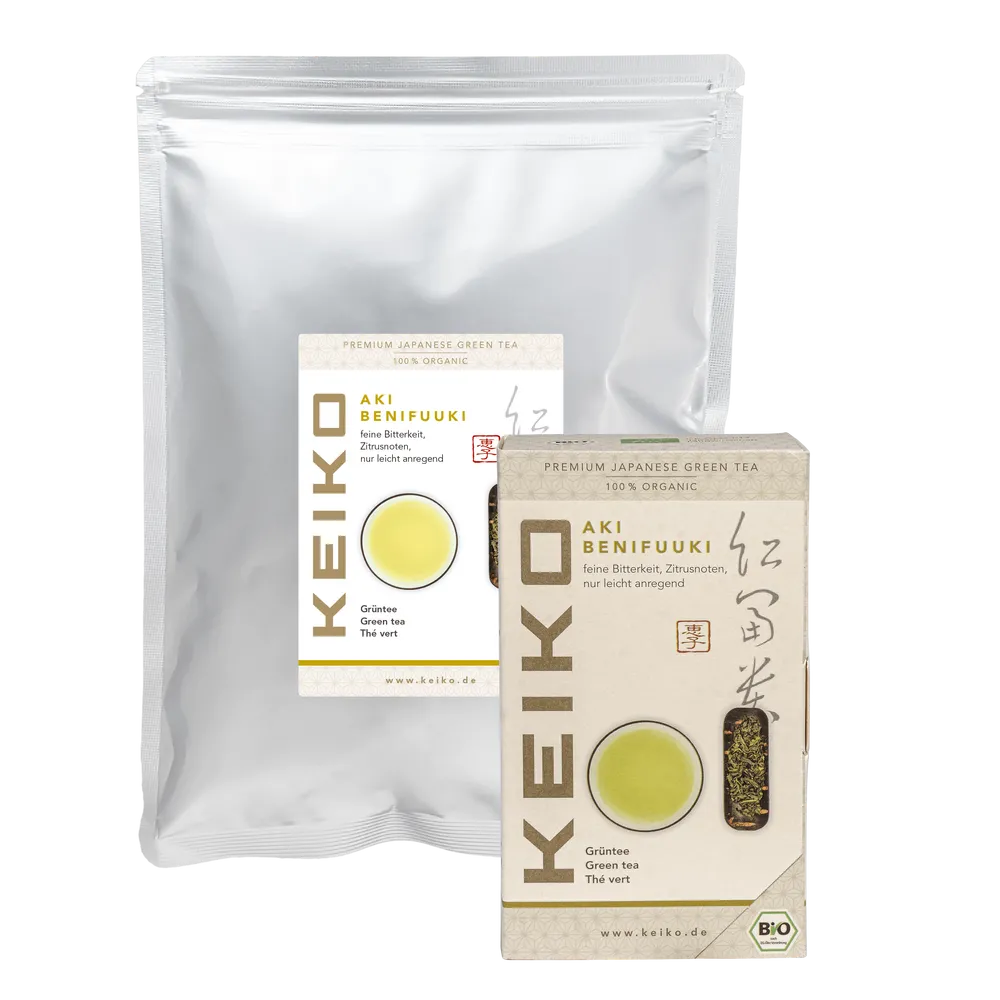€14.95*
Available, delivery time: 1-3 working days (in Germany)
Unlike regular Green Tea this Japanese green tea specialty from the 1st picking in May is slightly fermented. It comes from the tea variety "Benifuuki" and has a very high content of the antioxidative or antiallergic catechines EGCg and 3MeEGCg (EGCg3).
The scent and flavor of this years harvest, when all conditions are just right during the time of the Benifuuki Spring picking surprised even us.
We are delighted by this new harvest: As soon as you open the package a wonderful smell streams out, characteristic for Benifuuki and a little like that of very fine Oolong tea. The leaf structure is good and of a luscious green. In the cup the tea develops a soft green color with golden reflexions and caresses the tongue with playfully fruity and light with a subtle tartness and the elegant notes of jasmine in the scent.
In order to preserve the precious flavours and ingredients of the tea as best as possible, we recommend to seal the bag well and store it cool and dark - ideally in your refrigerator or freezer.
The production and also the fragrance are similar to that of Oolong tea. However, the freshly harvested leaves are not simply heated, but steamed briefly at especially high temperatures. Furthermore, the partial fermentation does not take place in a warm environment as with Oolong, but in the dark at a low temperature. Only the further drying and pressing process corresponds to that of Oolong tea. Thanks to this special processing this unusual tea stays green like a real Japanese tea!
Properties
Green tea preparation instructions
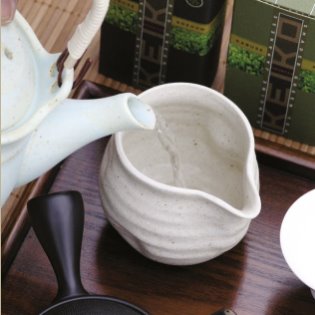
Prepare
Prepare a cup for each person that has a capacity of 80 to 100 ml. Allow the boiled water to cool to 80° to 60°C, depending on the type. To do this, either put the water in a cooling bowl or pour it directly into the cups to cool, which will also preheat them.
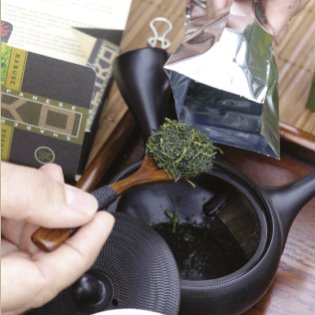
Dose
Put a level teaspoon of tea per person into a clay pot. Pour one cup of water per person over the leaves. Allow the first infusion to brew for a maximum of 30 to 60 seconds.
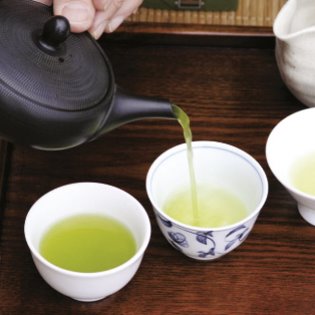
Pour
If the tea is to be served to several people, first pour a little tea into each cup and then fill the cups in reverse order. This way, the tea will be the same strength in all cups. The pouring movements gradually give the tea the right green color. Pour out the last "golden" drops and prevent the tea from brewing any further.
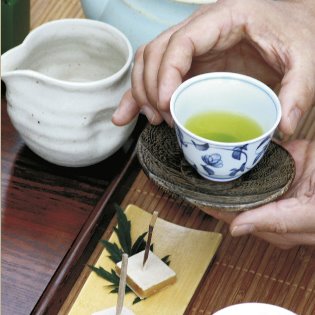
Enjoy
Serve the tea fresh. In Japan, a small sweet treat is often served with unsweetened tea. For further infusions, pour water over the tea leaves again. Only allow to steep for about 15 seconds, as the leaf has already swollen and the ingredients are released more quickly. Distribute quickly all around.
| Shimodozono International GmbH |
| Strothestrasse 50 |
| 49356 Diepholz |
| Germany |
| Phone: 05441-9959560 |
| Fax: 05441-9959569 |
| E-Mail: info@keiko.de |
Login
19 October 2021 22:21
Wundervoller Tee!
Ich habe mich nun durch allerhand japanische Grüntee-Sorten verschiedenster Lieferanten durchgetrunken und hatte bislang einen tiefbedampften Halbschattentee (Kabuse Fukamushi) aus Hoshino als Favoriten gekürt. Zu meiner Überraschung*) steht der Benifuuki #1 diesem Tee geschmacklich kaum nach - vollmundiges Umami, vielschichtige Aromen, rundum ein Genuß! Der vierte Aufguß ist vielleicht etwas schwächer als beim Hoshino-Tee - aber das ist Meckern auf hohem Niveau! *) Bisher hatte ich aus gesundheitlichen Gründen nur Benifuuki #2 in Gebrauch, der ja dann doch weit grasiger schmeckt...
20 April 2023 13:52
Weniger Zeit, mehr Aufgüsse
Dass Benifuuki #1 sehr weit vorn mitspielt, hatte ich ja schon geschrieben. Mittlerweile sagt er mir geschmacklich sogar noch mehr mit der chinesischen Gong-Fu-Aufgußmethode zu (vgl. John Blofeld: Das Tao des Teetrinkens; t-Magazin 1 vom April 2022). Abgesehen vom ersten Aufguß, bei dem die Kanne sofort wieder geleert wird ("Blätter waschen" bzw. "der Aufguß für den Feind") wird wenig Wasser lediglich ca. 10 Sekunden auf den Blättern stehen gelassen (ggf. im weiteren Verlauf Verlängerung der Ziehzeit und/oder höhere Wassertemperatur verwenden). Damit erziele ich 6 weitere durchaus wohlschmeckende Aufgüsse, jeder mit einem eigenen Charakter. Der siebte ist dann zugegebenermaßen dünn und zeigt hauptsächlich gemüsige Aromen. Einfach mal als Alternative ausprobieren!
17 April 2024 08:40
Allergie
dieser Tee ist super in der Allergiezeit
11 November 2021 13:32
Einfach hervorragend!
Vor vielen Jahren, als ich von Kaffee & Schwarztee auf Grüntee umgestiegen bin, habe ich mich zunächst durch viele Grüntees "getrunken" und bin damals so auch auf die Keiko-Tees gestoßen und bis jetzt aus voller Überzeugung bei Keiko Tees geblieben. Ich habe abwechselnd unterschiedliche der Tees genossen und habe dann vor einigen Jahren auf Grund des EGCg diesen Benifuuki probiert. Es war plötzlich ein neuer Geschmack, anfänglich etwas ungewöhnlich für mich im Verglichen zu meinen gewohnten Tees, die ich bis da getrunken hatte, den Kabuse No 1, Kukicha, Soshun, Tenbu Fuka usw. Mittlerweile ist der Benifuuki 1 jedoch zu meinem Lieblingstee geworden, den ich täglich genieße. Jedes mal beim Öffnen einer neuen Packung genieße ich erst mal den intensiven, blumigen und aromatischen Duft. Und der Geschmack steht dem in nichts nach, vollmundig und aromatisch. Ich variire zudem auch gelegentlich Dosierung und Ziehdauer und bekomme so zusätzliche Abwechslung im Geschmack. Der Benifuuki ist zu meinem "Haupttee" geworen. Ich finde, einfach ein hervorragender Tee!
14 May 2022 13:54
intensiv lecker & Wirkung spürbar!
Wenn man, wie ich, grünen Tee sehr intensiv kräftig mag, dann wird man diesen Tee lieben :-) Und tatsächlich bemerke ich weniger Allergie-Symptome. Werde ihn nachbestellen und habe ihn schon weiter empfohlen.
23 August 2023 18:59
Mein Lieblingstee
Meine Frau und ich trinken den Tee jeden Morgen seit ein paar Monaten und sind begeistert. Geschmacklich super fein und er hilft uns bei Heuschnupfen sehr gut. Ein paar Blätter gegessen und das Niesen hört auf.
27 October 2020 11:51
Sehr gut
Hatte mir den Tee aufgrund der Vorbewertung mit nur einem halben Stern gekauft. In dieser schlechten Bewertung stand zu meiner grossen Überraschung, dass die Dame sich jeden Morgen auf ihre Tasse Tee gefreut hatte und dass ihr nur die neuste Charge nicht schmeckte. Meine zugesandten 50 g waren ebenso hervorragend und ich möchte gerne nachbestellen. Ist die Großpackung wirklich schlechter?
13 June 2022 15:51
Excelente Qualität
Ich war mit dem ganzen Vorgang absolut zufreden. So einfach und zuverlässig sollten alle Lieferungen funktrionieren.
21 October 2023 11:20
Wieder ein top Tee
Wir genießen seit mehreren Jahren euren Grüntee. Auch die aktuelle Charge schmeckt wieder hervorragend.
7 December 2020 07:03
Vielen Dank für die Wiedergutmachung
Die jetzige Charge in der 50 g als auch der 200 g Packung ist wieder von hervorragender Qualität. Nussig, Umami .... Ich habe natürlich meinen Jahresbedarf damit gedeckt. Ein bisschen Egoismus hilft den Rest des 200 g Beutels von der vorhergehenden Charge aufzubrauchen.

